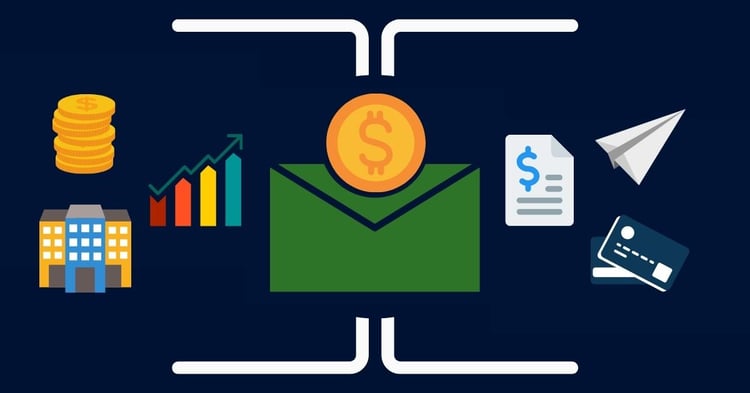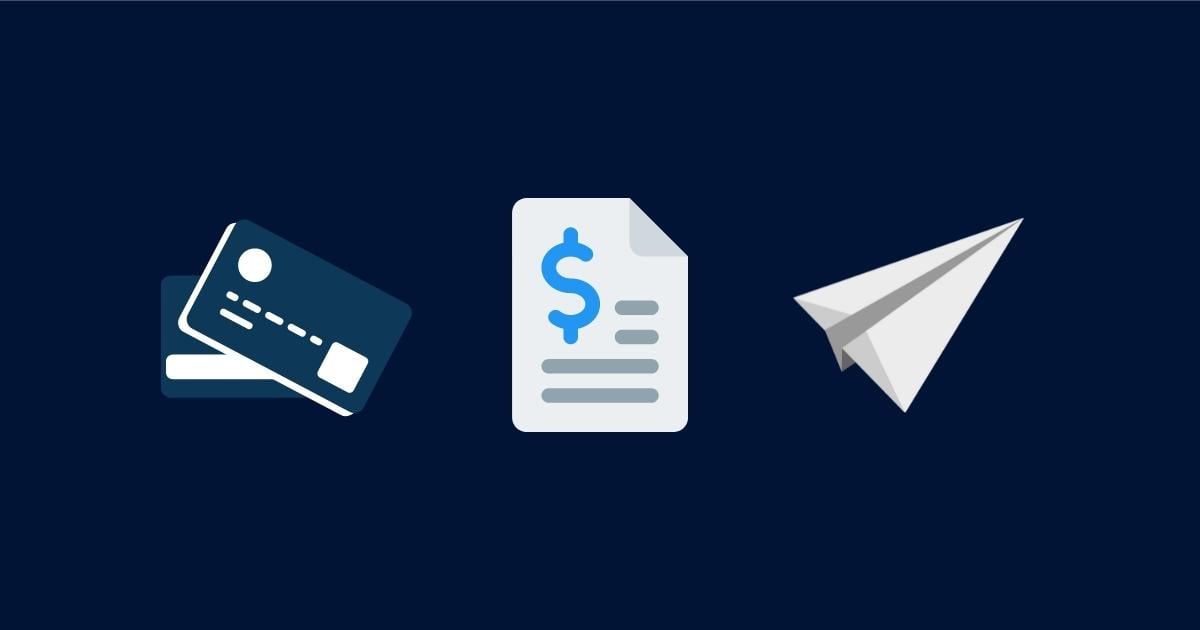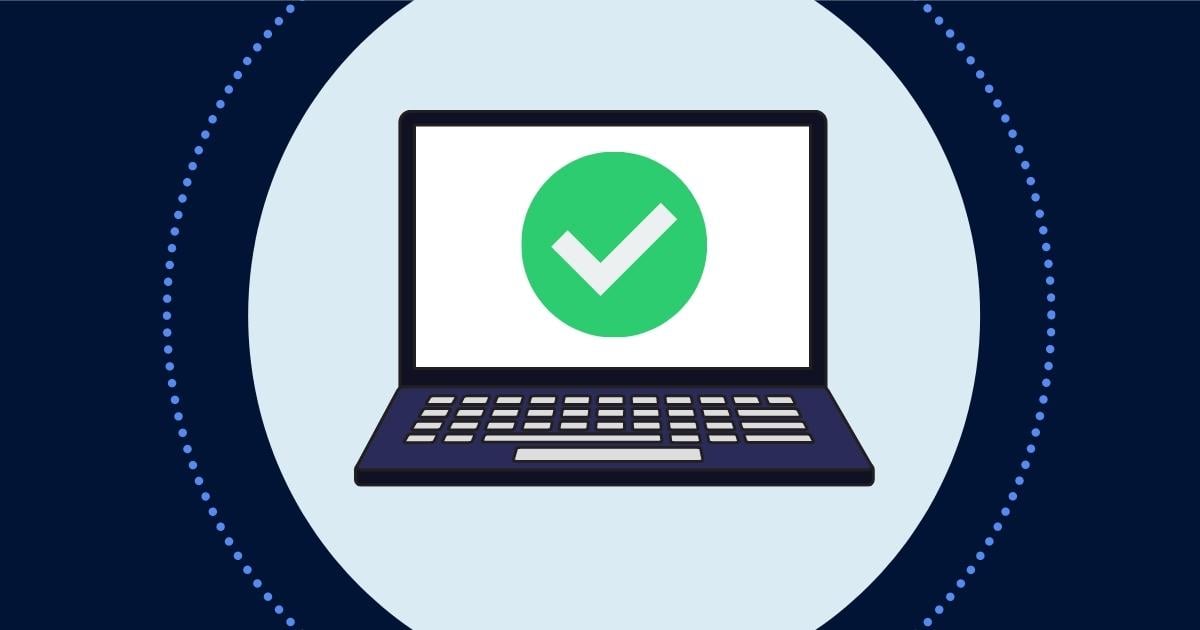
While it may be a little clear whether accounts payable is a liability or an asset, it may not be as clear whether accounts payable is a debit or credit. It's important to get all this terminology straight, or else your balance sheet will be way in the red.
This is particularly important since small businesses run on notoriously small margins, with just under half (43%) of them operating on less than $50,000 of sales each year.
So if you still don't quite know the difference between liabilities, assets, debits and credits, let's dive into each of these terms as they relate to accounts payable, and how you can make them work for your business.
Table of Contents
- Assets vs liabilities
- Debits vs credits
- Is accounts payable an asset or liability?
- Is accounts payable a debit or credit?
- How do you reduce accounts payable?
- How to calculate accounts payable
- How to record debits and credits in accounts payable
- How can accounts payable software help?
Assets vs liabilities
Let's start with the basics: what is considered an asset or a liability? These are the two main parts of your business's balance sheet, showing what your company owns that's of value (assets) and how you finance them.

What is an asset?
Assets are anything that have an economic value for your business. This includes things that will ultimately generate cash, improve your revenue streams or reduce your business' expenses.
There are a few different types of assets that you can mark on your balance sheet: current, fixed, financial and tangible.
When it comes to accounts payable, you'll be dealing most with the current assets but we'll define them all for you here.
Current assets
Current assets are anything that can be turned into cash in a short amount of time, typically within 90 days, or up to a year.
Accounts receivable is considered a current asset as it deals with collecting money from your clients and customers. Other assets that can be current include straight cash and your inventory.
Fixed assets
Fixed assets are physical items that don't typically get traded too frequently, and will grow the financial value of your company. These include real estate or the equipment you use to run your business.
Financial assets
Financial assets are investments in other businesses or operations that will help grow value for you, like stocks, securities and bonds.
Intangible assets
Intangible assets aren't physical in nature; these are the things you can't see but bring you value like your company's trademark, or any patents you've registered for new products. Cryptocurrencies are also currently viewed by financial institutions as intangible assets.

What is a liability?
Liabilities on the other hand are what your company will be paying for based on past transactions – the money going out of your business.
You'll find them listed in one of two ways on your balance sheet, as current liabilities which mean they must be paid out within the next 12 months, and long-term liabilities which are paid out longer than a year.
Liabilities are also considered claims against your assets. When it's time to pay off the liability, you'll note it – or rather, debit it – against your current assets. More on how debits and credits work, below.
Go back to the table of contents.
Debits vs credits
While assets and liabilities are the items listed in your balance sheet, debits and credits are the actions taken within the balance sheet.
Every transaction is actually two entries in accounting, because each has someone selling something and someone buying something. One person will sell their goods and services to a customer, and the seller will list that transaction into their accounts receivable, while the buyer lists theirs into accounts payable.
Debits and credits, then, are a large part of a double-entry accounting system and it's critically important to get these right or else your balance sheet won't accurately reflect your financials.
Deebits mean the subtraction of an amount from a specific account, while a credit means an addition to the account. If something is added to the liabilities account, that's a credit to that account. If something is added to the asset account, it's listed as a credit while anything subtracted from the asset account is a debit.
So, increases in liabilities or assets are recorded as credits. Decreases in liabilities or assets are recorded as debits.
Go back to the table of contents.
Is accounts payable an asset or liability?
Accounts payable is a liability. It is the amount of money your company or business owes vendors or creditors for goods and services, making this a liability instead of an asset. It's the record keeping of money owed.
Outside of any long-term debt and obligations that need to be paid off, any balances due within the next 90 days will be recorded as a current liability in your balance sheet.
Go back to the table of contents.
Is accounts payable a debit or credit?
The short answer to this is, both. The first transactions that land in your accounts payable will be credits. This is because when a company buys goods and services from a vendor without immediately paying the cash for it up front – on credit – that amount will need to be paid back within a short period of time.
The same works for you as an individual when it comes to things like your mobile phone bill, or streaming subscription. These are services you receive on the promise that you'll pay for them later, typically in a 30-day billing cycle. And just like with your business, if you don't pay your bills on time, you run the risk of discontinued service, additional fees and strained vendor relationships.
Since accounts payables are a liability account, it will have a credit balance for the total amount owing to vendors, suppliers and creditors.
That said, as you pay off the invoices from your vendors, you will be debiting those amounts from your accounts payable, reducing the credit balance.
Go back to the table of contents.
How do you reduce accounts payable?
The best way to reduce your account payable is by paying off the current liabilities you have, over time. Accounts payable as a function represents the unpaid financial obligations your company has so as you pay these off, you can reduce – or debit – the amounts from your accounts payable.
And if you've been using your accounts payable to purchase assets, you'd increase the equivalent in the assets section of your balance sheet.
Go back to the table of contents.

How to calculate accounts payable
-
Identify your assets and liabilities
Assets are anything that have economic value – that generate cash – for your business, including investments and accounts receivables. Liabilities are what your company will be paying for based on your past transactions – your accounts payables.
-
Identify how much you owe
Calculate how much you company owes each vendor or supplier for the goods and services you've purchased on credit.
- Note the payment terms
Every invoice outlines the terms in which the company pays to remit payment. They are typically in the form of net 10, 30, 60, 90 days or more. Note when each of the invoices is due chronologically in order of due date.
If you're in a position to process payment earlier than the due date, you may be eligible for discounts from the vendor.
- Create a chart of accounts
Enter all supplier invoice details into one system that keeps track of all your accounts payables. This keeps you organized, gives you wider visibility into your business' cash flow and enables you to post payments to the correct accounts.
Go back to the table of contents.
How to record debits and credits in accounts payable
Let's say you are purchasing $5,000 in materials from a vendor, on credit. Here we'll outline a brief example of how you'd report accounts payable, with a credit to accounts payable and a debit to the asset account, like accounts receivable.
Step 1. Credit accounts payable
Once the invoice arrives, you’ll note the $5,000 as a credit within your accounts payable.
Step 2. Balance the entry
Now you need to offset the accounts payable credit in your balance sheet, so you can record an entry in your asset account for the vendor that sold you the materials. Here you would debit the asset account for $5,000.
Step 3. Record your payment
When it's time to make the payment, you'll debit your accounts payable for the total of $5,000 decreasing the liability balance. Now this entry needs to be reconciled as well, with a credit to your cash balance account of $5,000.
For all these steps, accounts payable software could help record all the entries, automatically make the payments for you and reconcile the balance with your accounting software. A little more on that further below.
Go back to the table of contents.

How can accounts payable software help?
With this many things to keep track of, it may be beneficial to implement an accounts payable software solution.
Here are a few ways it can help make your accounts payable process smoother.
1. Visibility into all your accounts and better cash flow
Keep a bird’s-eye view of all your accounts, when their payments are due and more all from one place for easy analysis and payment.
2. Accuracy
Eliminate errors in manual entry or oversight by having your software solution track invoice details and highlight incorrect or duplicated information.
3. Speed
With all actions happening in one platform, you can verify, enter, approve, pay and reconcile your invoices faster and in real time.
4. Elimination of manual tasks
Automation will eliminate the need to enter vendor and invoice details manually, freeing up time and resources to focus on other aspects of your business.
5. Integrations with your tech stack
Small businesses use dozens of software solutions to successfully operate. Having them integrate seamlessly means being able to keep better track of every aspect of your operation, without clunky cross-communication.
One of the ways your organization can be better integrated is to use an accounts payable solution that reconciles with your accounting software.
Go back to the table of contents.
Ready to get started?
Keeping track of all of your assets and liabilities, and knowing how to properly record credits and debits can be challenging for small business owners.
By implementing an accounts payable automation tool, like Plooto, you can keep all of your out-going money organized, accurate and on time, while eliminating the risks of errors and strained relationships with your vendors.
Go back to the table of contents.
CHAPTERS
00 A Complete Guide to Invoice Management for Accounts Payable
01 Is accounts payable an asset or liability?
02 Accounts Receivables vs. Accounts Payables: What’s the Difference?
03 How to Set Up a Full Cycle Accounts Payable Process and Workflow
04 How can accounts payable automation help your small business













